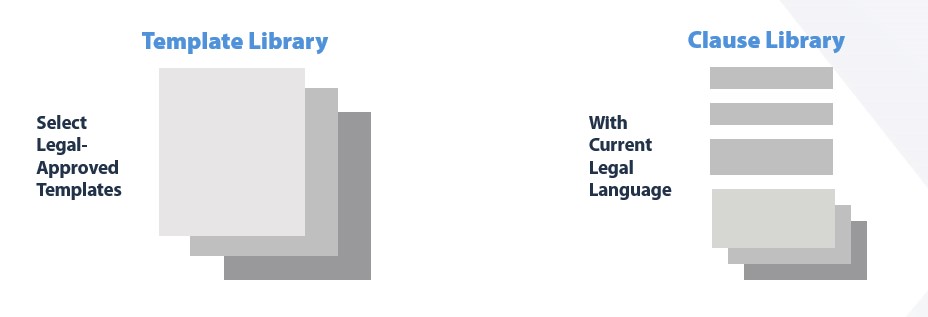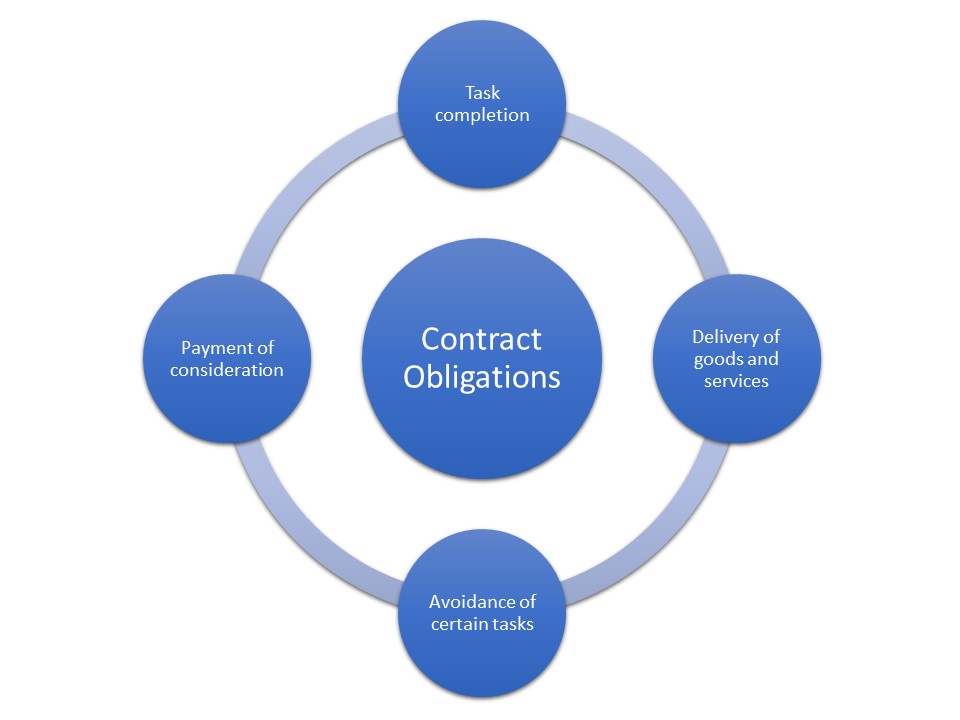Managing Contract Risk with the Right Contract Management Tools
May 3rd, 2023
Contract risk can affect relationships with other companies, jeopardize a business’s bottom line, and result in legal action or regulatory fines. Managing contract risk is an important component of the contract management process, but how does a company best do this? The solution lies in employing a set of contract management tools. We looked at some of these tools in this article.
Key Takeaways
- There are many different types of contract risk, including financial, operational, legal, regulatory, security, and brand.
- To better manage contract risk, centralize all contacts in a single digital repository.
- Clause and template libraries, advanced search, automated obligation tracking and notifications, and e-signatures are useful tools for managing contract risk.
- Contract risk can also be mitigated by automating contract workflow with a contract lifecycle management tool.
🤫 PS: Learn how to minimize risk with effective contract management HERE.
Assessing Contract Risk
Contracts can be risky. But how do you know what kinds of risk you may encounter and assess your risk level?
Types of Contract Risk
There are six common types of risk associated with business contracts. These include risks to your organization’s:
- Finances
- Operations
- Legality
- Regulatory compliance
- Security
- Brand
Even non-financial risks can cause financial damage. A poorly written contract that affects your company’s operations can increase costs or slow down revenues. A contract that exposes your firm to legal action can result in large monetary damages. A contract that isn’t compliant with governmental or industry regulations can lead to hefty fines. A contract that compromises your company’s data can result in costly data breaches. And a contract that damages your brand image can cause a catastrophic drop in sales.
You need to be aware of all these types of contract risks and work to reduce them.
How to Assess Your Risk
To minimize contract risk, you first need to assess your organization’s contract risk. This requires you to:
- Determine the level of risk in each individual contract
- Estimate the overall risk level of your total portfolio
- Establish what types of risk are present
- Decide how much risk you’re willing to assume – both overall and in individual contracts
When assessing risk levels, consider both the probability and the severity of the risks you identify. A risk with low probability but high potential cost might not be worth taking, while one that is more probable but less costly might be acceptable. Once you determine what is and isn’t acceptable, you can begin working to mitigate those risks.
Contract Management Tools for Managing Contract Risk
Contract risk is often significant. According to KMPG, uncontrolled contract risk can cause a contract to lose up to 9% of its value.
Contracts that don’t comply with governmental and industry regulations can be even more costly, with noncompliance events averaging $4 million in fines and lost business. Companies simply can’t afford the risk of non-compliant contracts.
For these reasons, your organization needs to take all necessary steps to minimize contract risk. Here are six effective tools to help you reduce risk.
Template and Clause Libraries
When contract management is farmed out across an organization, it’s easy for individuals, departments, and locations to create rogue contracts that don’t hew to your company’s established standards. Leaving individual actors to draft their own contracts, terms, and language puts you at risk for internal, legal, and regulatory noncompliance.
The solution to this is to base all new contracts on predesigned templates with standardized legal language. Customize individual contracts by selecting appropriate clauses from a library of preapproved clauses and terms. By leaving less to chance, you reduce the risk inherent in rogue contracting.
Centralized Contract Repository
Another proven way to reduce contract risk is to centralize the storage of all your organization’s contracts. Contract risk multiples when contracts are scattered throughout an organization, handled by multiple employees and departments, and stored in numerous locations. When contracts are siloed in this fashion, you may not even know what contracts your company has committed to, let alone the contents of those contracts. If you don’t know where all your contracts are, the risk of missing deadlines and not fulfilling obligations increases significantly.
A centralized contract repository makes it easier to know your contracts and what’s in each contract. Obligations are easier to manage, as are contract renewals. It also makes it easier to search and access your contracts. This can also reduce risk, as you spend less time looking for contracts and more time acting on them.
Advanced Search
A contract stored away just to gather dust isn’t very useful to your organization. You can’t learn from contracts you can’t easily access. It’s also likely that you don’t know what’s in those contracts that reside in unopened filing cabinets.
Storing all your contracts electronically, in a centralized database, not only helps you know what contracts you own, but it also helps you extract more useful information from those contracts. Adding a robust search capability to centralized storage helps your employees find the contracts and the information in those contracts that they need. More accessible information means more usable information – and more actionable insights.
Automated Obligation Tracking and Notification
One common contract risk is missing contractual obligations. This risk increases when contracts are spread throughout an organization, and you have no centralized way to determine what obligations are due and when.
Centralizing your contracts in a single repository reduces this risk to some degree. You can further reduce the risk of missed obligations by employing an automatic obligation tracking tool. This tool identifies and records all the obligations and deadlines in each of your contracts and sets up automatic notifications for those commitments, significantly reducing the risk associated with missed deadlines – both your own and your contractual partners’.
Automated Contract Workflow
Contract risk starts long before a contract is signed. When a contract is in process you run the risk of that contract getting lost or delayed. Every company has at least one story of a contract that sat on some person’s desk for so long that everybody forgot it even existed. The risk of not signing a contract can be substantial.
To eliminate process risk, automate your contract workflow with a contract lifecycle management (CLM) tool. CLM tools automate the entire contract workflow, from creation to execution, ensuring no contract ever gets lost in the system. Contracts are automatically routed to the proper individuals and departments, complete with electronic reminders for overdue tasks.
E-Signatures
The final tool for reducing contract risk is the electronic signature. E-signatures not only speed up contract execution but also makes execution much more secure. Unlike traditional physical signatures, e-signatures can’t be faked.
Let Contract Logix Help in Managing Contract Risk for Your Company
When you’re looking for contract management tools to reduce contract risk, consider Contract Logix. Our CLM tools reduce risk at all stages of the contract lifecycle, including contract and template libraries, a centralized digital contract repository, advanced search capabilities, automatic obligation tracking and notifications, automated workflows, and secure e-signatures. Use Contract Logix to automate your contract management – and reduce your contract risk.
Contact Contract Logix to learn more about managing contract risk.
Looking for more articles about Contract Management? Check out our previous article “The Complete Guide to Vendor Contract Management“.
Accelerate Your Digital Transformation With Contract Logix
Download our Data Extraction Product Brief to learn how you can automate the hard work using artificial intelligence




